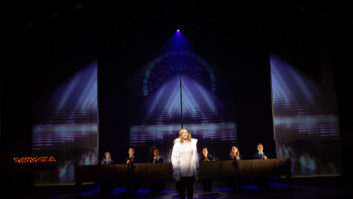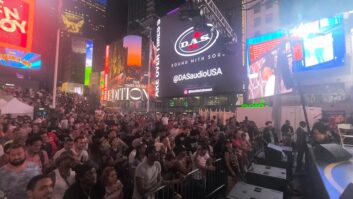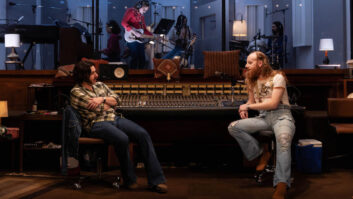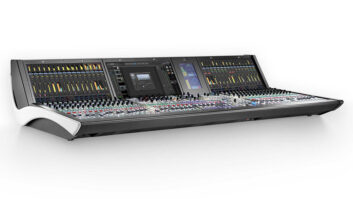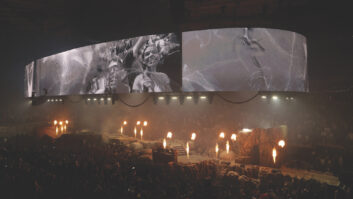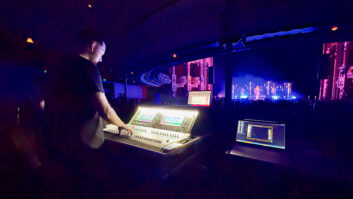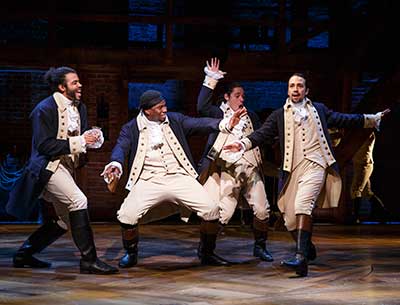
Nearly 40 years after emerging from the streets of the Bronx, hip-hop is finally a hit on Broadway, thanks to the SRO juggernaut known simply as ‘Hamilton.’
Ticket demand is so intense for this mashup of American history, hard beats and street rhyming that in an off week it grosses $1.5 million. The show is widely expected to do well at—as in, sweep—the Tony Awards next June.
Hamilton was written (book, music and lyrics) by 35-year-old Lin-Manuel Miranda, the Tony-winning creator of the urban Broadway musical In The Heights. Miranda also plays the lead role.
This unlikely musical came about by chance. Miranda bought Ron Chernow’s 2004 Alexander Hamilton biography at the airport before a vacation, and saw Hamilton (a brilliant but impoverished Caribbean immigrant, born out of wedlock) and cohorts as bold, street-wise revolutionaries—and enthusiastic skirt chasers—who had much in common with rappers. In fact, Hamilton’s upbringing reminded Miranda of Jay Z’s early life in Brooklyn housing projects, he told the New York Times.
The complex story of the remarkable and ultimately tragic life of Alexander Hamilton, George Washington’s right-hand man and the first Secretary of the Treasury, who died in his 40s in a duel with Vice President Aaron Burr, is told entirely in hip-hop songs and R&B ballads. African-Americans and Latinos play the founding fathers. “Our cast looks like America now,” Miranda told the Times. “It’s a way of pulling you into the story and allowing you to leave whatever cultural baggage you have about the founding fathers at the door.”
This unusual production meant sound designer Nevin Steinberg had to make a long, loud hip-hop show work for a traditional Broadway audience, which is mostly older, white and which, until Hamilton, showed little or no interest in hip-hop. He also had to make sure every audience member could understand every single word during the two-and-a-half hours of singing and rhyming.
Steinberg, who also designed the show for its Public Theater debut, felt Hamilton could go quite loud on Broadway if the system were built for what he terms “high definition” and extreme dynamic-range elasticity. While Hamilton gets loud, it also goes very, very quiet.
“Loud isn’t a bad thing if you think about what it means in conveying peoples’ emotional experiences, as opposed to just trying to be loud,” Steinberg says. “But going loud is also a big responsibility, because you have an audience that you don’t want to discourage from listening, so you don’t want to be hitting people really hard, at least not constantly!”
Associate sound designer Jason Crystal hasn’t run a meter and so couldn’t state a dB level, but says, “We get much louder than it sounds. But we are very tightly tuned, so it is not harsh.”
Step one in achieving high-definition audio meant running the entire system at 96 kHz (up from 48k Off Broadway). “Everything—monitors, the band, the console, surround—everything is clocking at 96k,” Crystal notes. “We’re firmly in the camp that 96k just sounds better, clearer and more detailed.” The pit band, monitoring on earphones via Aviom systems, noticed the improved sound immediately.
Another change from the much smaller Off-Broadway house was a major speaker upgrade.
“Every aspect of speaker system is intended to keep excess sound offstage,” Crystal says. “Our speakers are incredibly good—we have 20 of the new d&b Y8s in our two main line arrays, and they are impressive in their directionality. We’re the first Broadway show to use them.” Two pair of L-Acoustics ARCs immediately offstage on both sides round out the core of the main system. Hamilton uses a total of 172 speakers, including six Meyer Sound subs.
“No one is hearing only a simple stereo left/right house mix [from around the proscenium],” Crystal adds. “We have tremendous control over individual speakers—how they are amplified and mixed. Each section of the house gets a special mix. Nevin sat in each section during previews and made these adjustments.” There are roughly 20 separate zone-specific mixes in the 1,319-seat Richard Rodgers Theatre, Crystal estimates.
Further distinguishing Hamilton, and complicating life for the sound team, is a complete lack of spoken dialog. Virtually the entire show is sung. That made 100 percent intelligibility, always job Number One in a musical, a key challenge for the sound team.

“We spent 12 hours doing Meyer Sound SIM 3 system tuning,” Crystal explains. “Nevin spearheaded this tuning, I helped out. This gives us a lot of info about how the system is behaving. SIM gives us the data, and the speaker control afforded by the DiGiCo SD7T control surface gives us tremendous ability to manage the system.”
However, assuring intelligibility was not Steinberg’s biggest challenge. Hamilton must be as big, loud and bold as American history, but then turn on a dime and zoom in emotionally and audibly on much smaller character moments. As it turns out, his key challenge was managing the energy and emotion of the show as expressed in the sound’s wide dynamic range.
The team was constantly asking themselves, “How do we make sure the audience is also taken to those same extremes, that we don’t limit the transformation that’s available to us through musical theater—because we also exaggerate it at times. This piece is ripe for that,” Steinberg says.
The big, loud scenes are intense. The Battle of Yorktown has “guns, percussive physical movement of the cast, a record-scratch solo and what I call angry bass guitar and drums,” Steinberg says. It also has some huge, booming explosions. This is a hip-hop musical, after all, and Steinberg asked himself, “How far can we go, without damaging anyone or anything, but still actually try to move air in the theater in a way that lives up to what a modern operatic version of that battle might be? Then, we also zoom in on the characters of Aaron Burr and Hamilton’s wife Eliza, so we asked, ‘How small, focused, dry, thin with volume, texture, reverb, can we go?’”
The DiGiCo SD7T control surface, along with its proprietary theater software, gives the team tremendous control over 28 matrixed outputs, which makes managing the wide dynamic range much easier, Crystal says.
These major dynamic shifts happen fast. In a pivotal Act Two moment, Hamilton is being blackmailed by political foes who have caught him in an illicit love affair. Hamilton chooses to publish a pamphlet admitting his guilt in great detail, sacrificing his personal reputation to try to save his political life. He seems oblivious to the impact this will have on his wife, Eliza.
This scene, Reynolds Pamphlet, “is incredibly raucous, exuberant, downright noisy,” Steinberg says. “That matches the chaos of the emotion of that moment, the havoc that’s been wreaked on Hamilton and his family. It is a lot like the Battle of Yorktown scene in that way.”
Immediately following that scene, Eliza sings the quiet, wrenching ballad “Burn,” and literally burns letters from Hamilton, onstage.
“We exaggerate the quiet moment of ‘Burn,’ immediately following Reynolds Pamphlet, and zoom in on the loneliness and isolation of Eliza, singing of how she’s going to deal with the emotional consequences, and of her resolve to respond. The orchestration is stripped down to solo piano. The focus of the entire production is on one person sitting on a bench with a lantern.”
It is an intensely quiet moment, absolutely the only time the audience can hear ventilation, lighting fans or anything making a whisper of a sound in the house, “And it tickles me that we can do both,” Steinberg says.
Part of managing the wide dynamic range is choosing gear that can handle the extremes. For example, “We have some extended low frequency in this show you don’t generally hear on Broadway,” Steinberg says. “We added low-frequency extension with these two Meyer Sound 1100-LFC subs, which are big for Broadway, and we heard new music (from keyboards and electronic track) that was inaudible downtown. We just didn’t have room for these monsters Off Broadway.”
The 250-pound powered subs, with two 18-inch drivers each and a 28Hz-100Hz range, sit vertically on the floor flanking the stage, out of sight. Four Meyer Sound 600-HP subs sit in plain sight, however, mere inches from audience members, in both orchestra and balcony seating boxes.
Another challenge of bringing hip-hop to Broadway is that the singers are not using handheld mics—“the instrument of hip-hop,” Steinberg says. And there wasn’t any useful way to make RF lav mics sound more like handhelds, so they ultimately did not try. “We simply took a more traditional Broadway approach, to make the RF mics sound good,” Crystal explains.
The leads wear a mix of head mics hidden in wigs (Hamilton) and customized booms for characters without hair (Burr, Washington). Burr’s boom also allows classic hip-hop vocal echo effects to go live rather than through playback, thanks to the proximity of the mic.
However in cabinet debate scenes in the Washington administration, staged like hip-hop throwdowns, a wooden dueling-pistol case is brought out and in the show’s only truly meta moment, Hamilton and Thomas Jefferson take out iconic Shure SM58 mics (actually Shure UR2s with Beta 58 heads). They go at each other gleefully, forcefully expressing their contrasting political and economic views in street-rhyming style. The mics were chosen for their classic hip-hop looks, as well as sound quality.
Ironically, the team added processing to make them sound even more like handhelds (used close for maximum proximity effect), “Squashing them with compression, increasing the low end,” Crystal says, wryly.
Monitoring is basic, another change from hip-hop practice of wedge monitors running loud vocals. The cast “self-monitors for vocals, hearing the system reflecting from the house to stage,” Crystal explains. “The only time they hear vocals in monitors is from the handhelds in the cabinet battles. This was a big adjustment for performers.” Otherwise, the static monitor mix is band-only. There are 12 monitor speakers overhead onstage, eight in the wings and eight hidden on the stage lip.
Steinberg got full support for his sound design; the producers understood how crucial sound was to making hip-hop work on Broadway. “We were given the resources to do what we needed to do. The producers were behind us 100 percent, and at every turn I got choice ‘A!,’” he notes with satisfaction.
